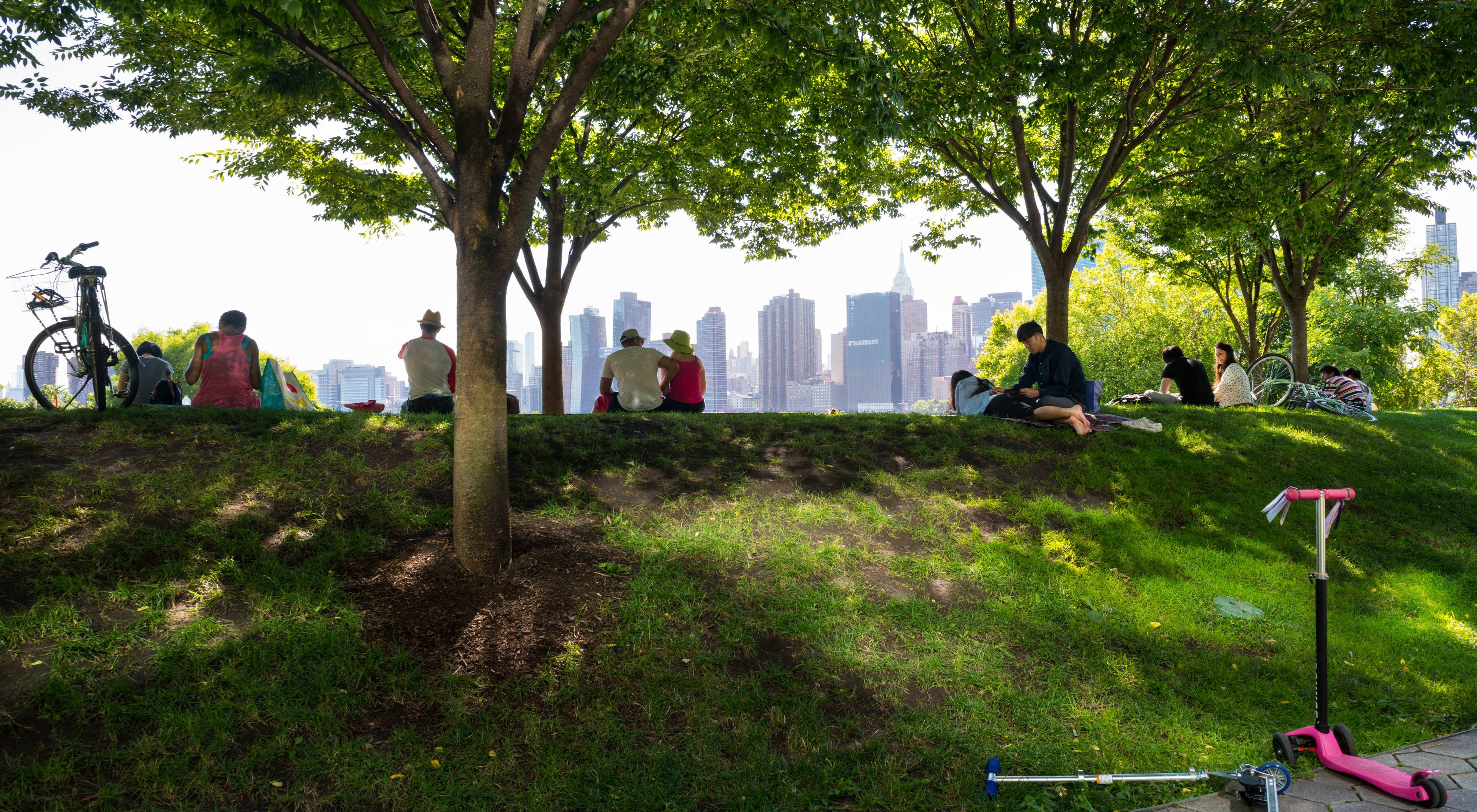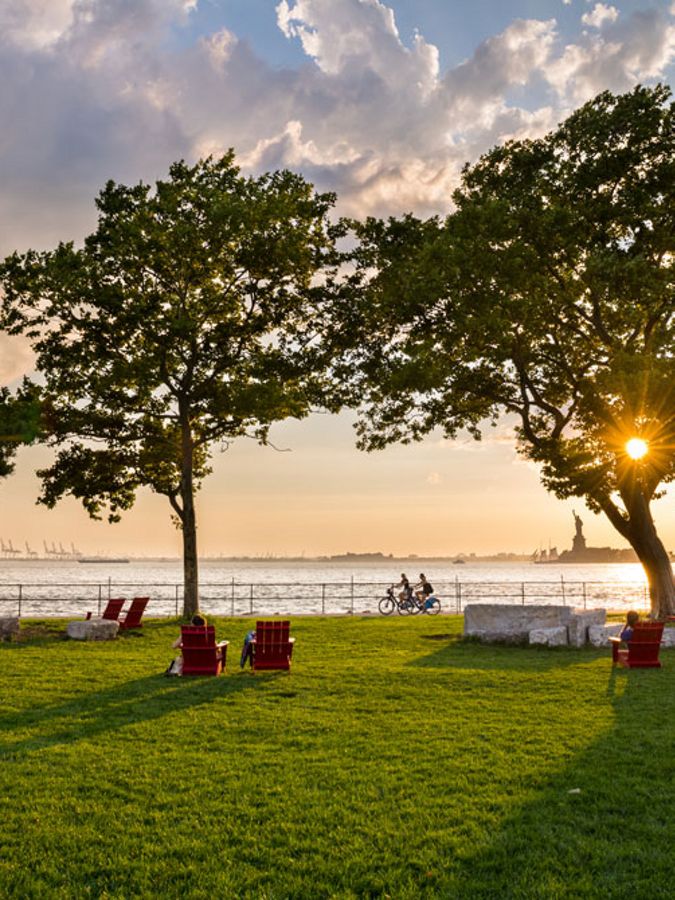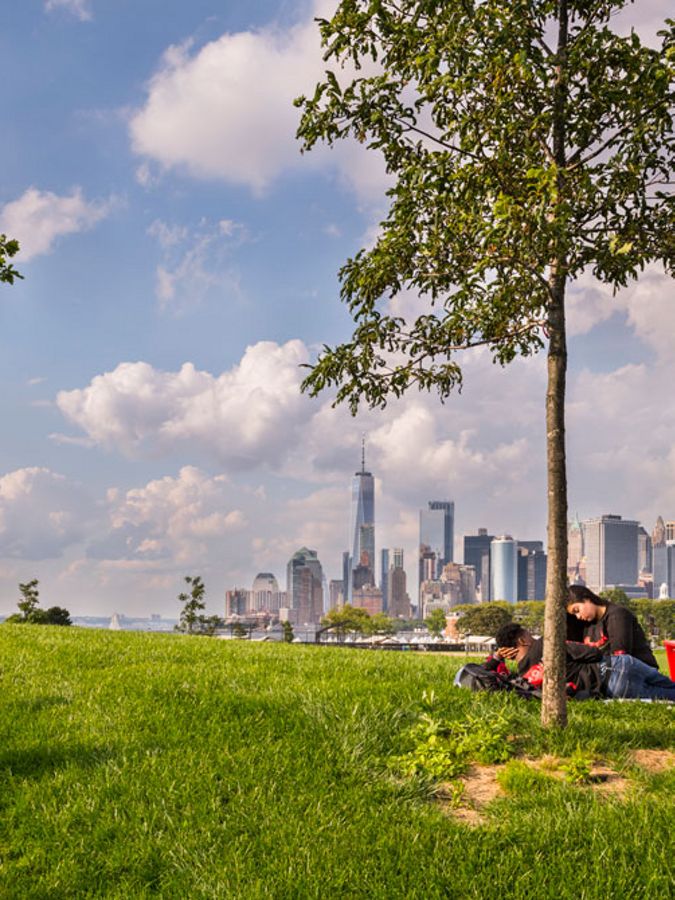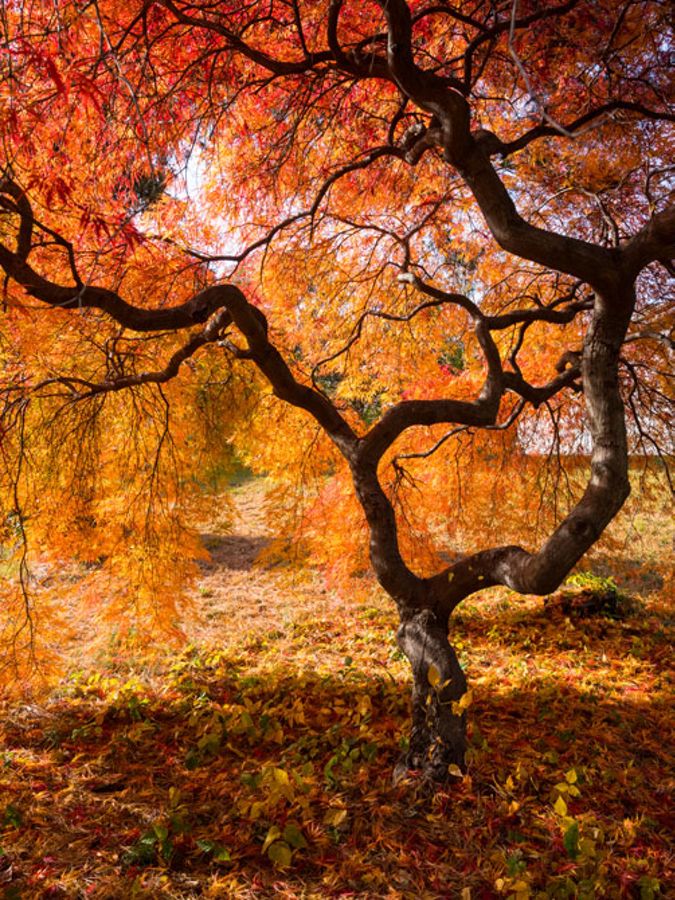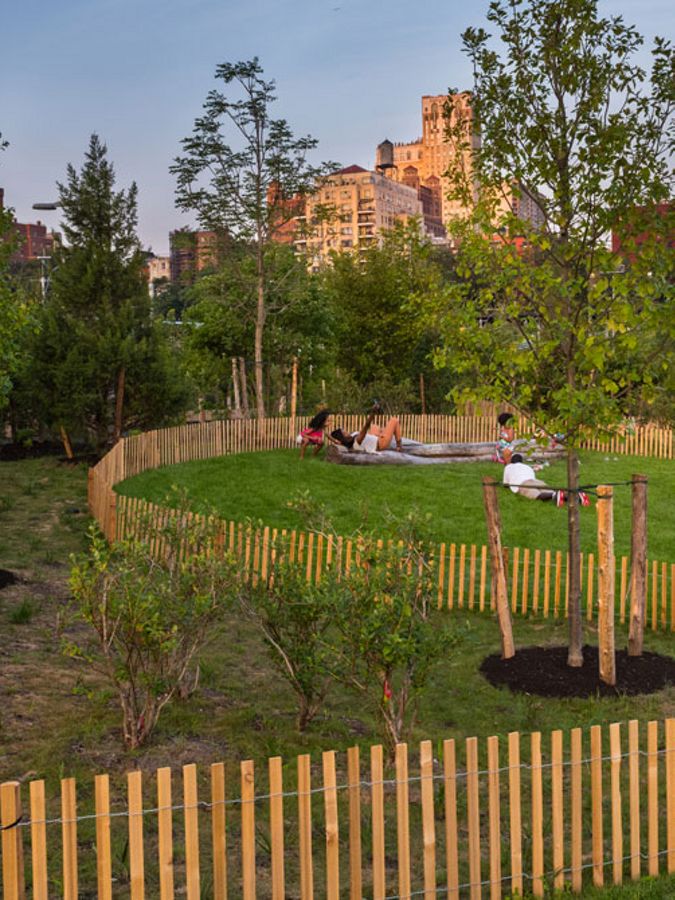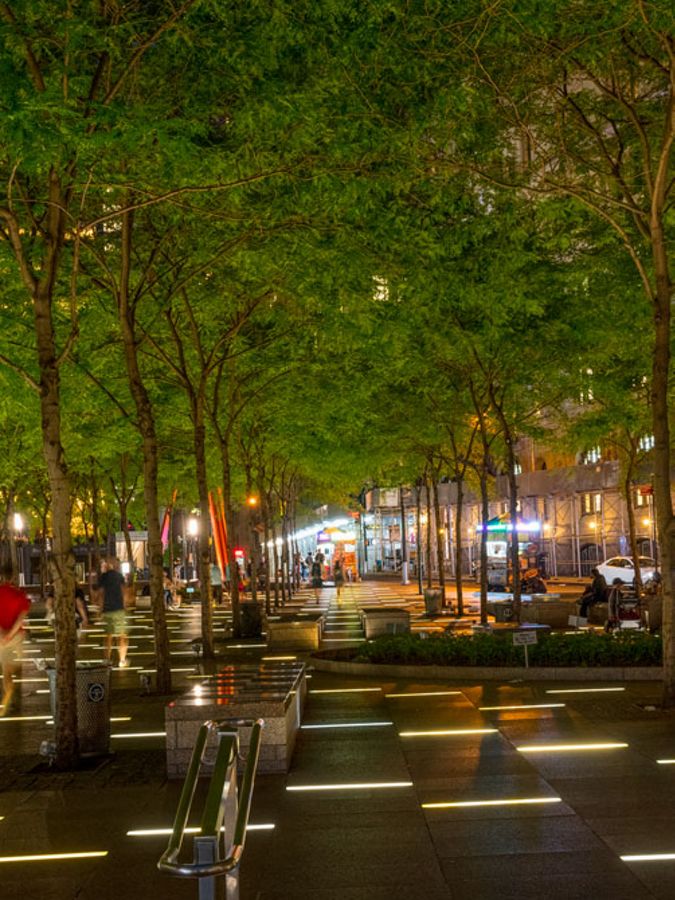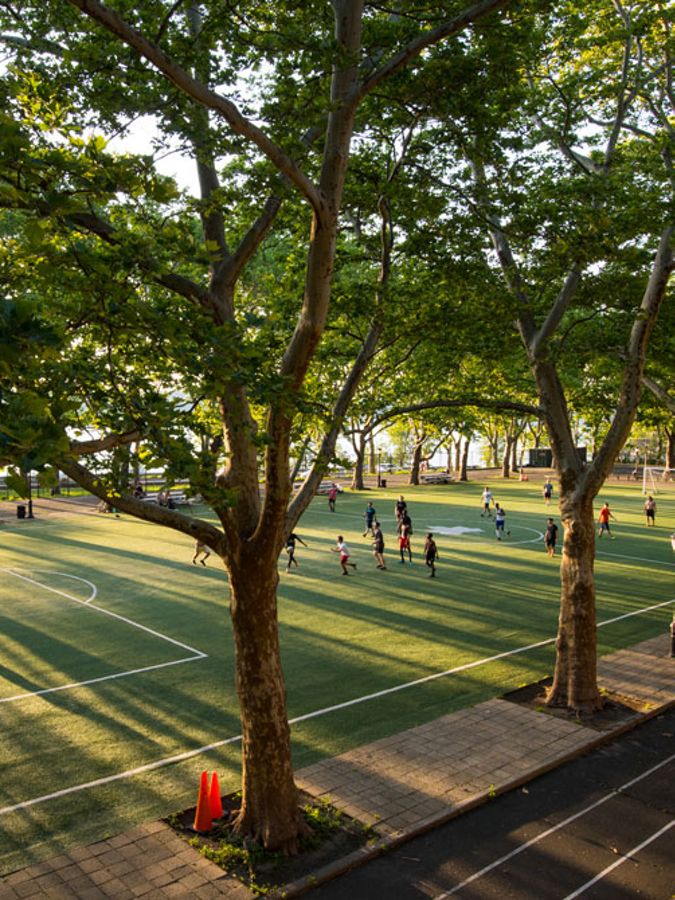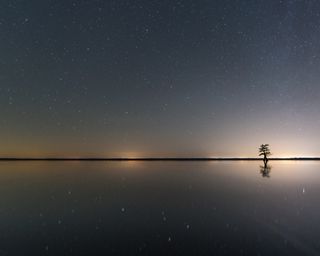Urban Roots
The city recently completed an effort to plant another million trees—this time to help tackle climate change.
By Jenny Rogers, Senior Editor & Writer, Nature Conservancy magazine | May 31, 2019
Summer 2019

Green Cities
For a famously crowded and sleepless city, New York has a surprising number of quiet, shady retreats. Shaded parks and playgrounds line Riverside Drive, cemeteries form a belt between Brooklyn and Queens, and there’s even an old-growth forest at the northern tip of Manhattan. More than 8.6 million people live in the city, but 7 million trees grow alongside them.
Spurred by concern about climate change, cities across the United States have committed to growing what city planners call the urban forest, but few have done so as successfully as New York. In 2015 the New York City Department of Parks and Recreation and local nonprofit New York Restoration Project completed an eight-year project to plant 1 million trees.
New York hasn’t always embraced trees. Local reformers were ahead of their time when in the 1800s they suggested trees promote public health, says landscape historian Sonja Dümpelmann in Seeing Trees. In the 1870s, one physician argued for planting trees to “equalize the temperature” in the city, after noting a correlation between the highest average weekly temperatures and deaths among young children from “diarrheal diseases.” By the 1930s, city planners had taken a cue from Europe and began planting the hardy London plane tree just about everywhere—a foreign tree for a city made of immigrants.
As New York faces a new climate challenge, the city’s trees are even more important, says Emily Nobel Maxwell, who directs The Nature Conservancy’s New York City program. The city is already seeing more intense heat waves and frequent storms, she says, and it will need to keep planting and tending its urban forest. Trees will cool the air and help absorb the torrents of rain.
And trees simply make city life more pleasant. “I think about climate,” says Maxwell. “But I also think about 365 days a year, what it feels like to walk on a street that has beautiful trees.”
Scroll through photographs of New York City trees by Diane Cook and Len Jenshel.
1
The Urban Forest
Towering trees line some New York streets, like this one in Brooklyn’s Park Slope neighborhood. The trees soak up rainwater, helping to prevent flash flooding and reducing stormwater runoff by approximately 69 million cubic feet per year, according to a 2018 Forest Service study. Recent tree census estimates have found 234 different species of street trees in the city.
2
A Different View
Once home to three active forts and a landfill, much of Governors Island is now reclaimed parkland. In Queens, The Nature Conservancy, Jamaica Bay-Rockaway Parks Conservancy and the National Park Service led a similar planting effort, installing 28,000 salt-tolerant trees and shrubs in Jamaica Bay Wildlife Refuge to replace vegetation uprooted by Superstorm Sandy. All told, the city’s trees store approximately 1.2 million tons of carbon. Each year, these trees remove an additional 51,000 tons of carbon and 1,100 tons of pollutants from the air.
3
Public Service
Before Governors Island became the urban refuge it is today, it was one of the longest continually operated military outposts in the United States, with military connections dating back to 1755. Much of the island’s forests were cut down to build forts in the early 1800s. After major replanting efforts in recent years, though, Governors Island now has more than 140 species of trees. Military operations ceased there in 1996, and the 172-acre island is now managed by the National Park Service and the City of New York as a public amenity.
4
Growing Conditions
Urban life is hard on trees. Street trees endure poor soil, limited space and restricted water, not to mention road salt, dog urine and accidental car strikes. Many young street trees, like this dawn redwood in Brooklyn’s Gowanus neighborhood, cannot survive without help from human caretakers. To improve trees’ rates of survival, groups including Trees New York, Gowanus Canal Conservancy and TNC are building a network of certified volunteer stewards to water and prune neighborhood trees.
5
Unlikely Places
Founded as a rural cemetery in 1838, Green-Wood Cemetery in Brooklyn is now very much part of the urban city. But because of its early founding, the sprawling cemetery provides something of a green refuge of trees and lawns in the city, providing habitat for birds and small wildlife. Like many rural cemeteries in the 1800s, Green-Wood became a popular picnicking spot for city dwellers. Its popularity inspired city leaders to create other recreational parks.
6
The Old Forest
At the northern tip of Manhattan, Inwood Hill Park gives New Yorkers a glimpse into the landscape that once covered the island, long home to the Lenape people before colonists arrived in the 1500s. Trails and a nearby monastery-like art museum—the Met Cloisters—provide a calm, quiet corner far from the bustle of Midtown. The trees here haven’t been logged since the Revolutionary War and the “caves,” created by tumbling rocks, date back to glacier activity more than 30,000 years ago.
7
New Parks
It’s hard to imagine, but Brooklyn Bridge Park was once a busy cargo shipping and storage area. Now, it’s a 1.3-mile stretch of rolling lawns and newly planted trees with a raised bank built to dampen sound from a nearby highway. It’s one of many industrial areas in New York that the city has transformed into green spaces to improve residential life.
8
Urban Green
Trees are found even in the most urban of places in New York, offering shade and respite from the city’s urban heat. In Zuccotti Park in Manhattan’s Financial District, formerly known as Liberty Plaza Park, 54 honey locust trees shade the thousands of tourists and locals who walk through. The trees themselves must be hardy to survive: In such a dense, paved environment, they endure salt, runoff, drought, pollution and limited space for their growing roots.
9
Living Architecture
London plane trees shade a soccer field in Riverside Park on Manhattan’s Upper West Side. The London plane is one of the city’s most common trees. It’s a hybrid of two types of sycamore, able to withstand pollution and space constraints and live for 200 years or more. Growing research indicates that trees positively affect the health of people who live near them. And for those who walk along shaded streets or play under its branches, the London plane, dubbed the “New Yorkiest of trees” by the New Yorker, is a beloved symbol of home.
Get the Magazine
Sign up to become a member of The Nature Conservancy and you'll receive the quarterly print edition of the magazine as part of your membership.
Trees

Jenny Rogers is a writer and editor for Nature Conservancy magazine, covering books, science and conservation.
